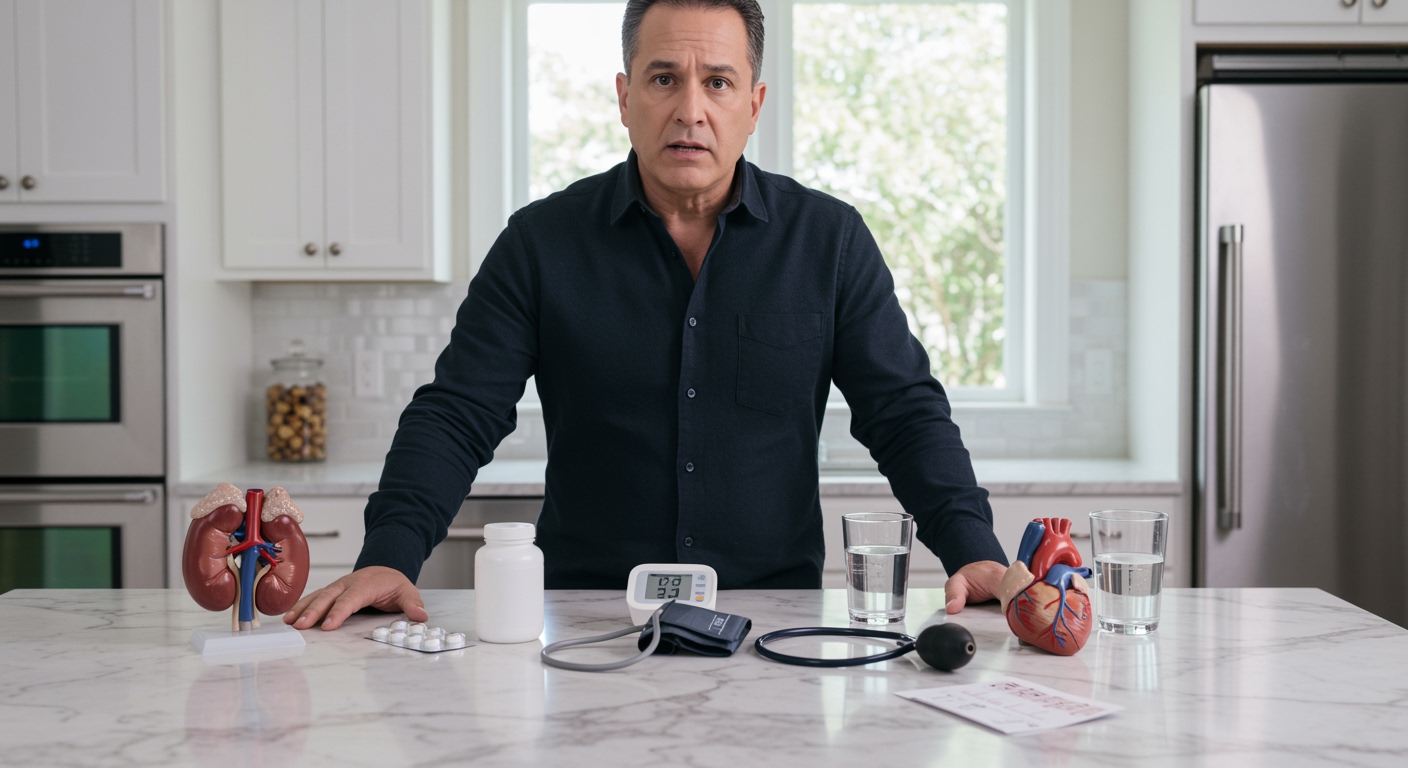✪ Key Highlight: Scientists discovered tears accurately mirror blood glucose while saliva reflects vitamin D status, potentially ending painful blood tests.
Introduction
Millions of people with diabetes endure painful needle pricks multiple times daily to monitor their blood sugar levels.
A groundbreaking study published in Physiologia reveals that tears and saliva could replace traditional blood tests for monitoring vitamin D and glucose levels, offering hope for pain-free health tracking.
Hi, I’m Abdur, your nutrition coach and today I’m going to analyze this revolutionary research that could transform how we monitor chronic health conditions like diabetes and vitamin D deficiency.
What Did The Study Actually Find?
Researchers conducted a pilot study comparing blood samples with tears and saliva from people with type 2 diabetes.
The results showed that tears closely mirror blood glucose levels with remarkable accuracy.
Saliva samples demonstrated a strong correlation with vitamin D status in the bloodstream.
This means your body naturally produces these biomarkers in multiple fluids, not just blood.
The study opens doors for developing non-invasive testing methods that could be used at home.
Scientists believe this discovery could revolutionize chronic disease management for millions of patients worldwide.
✪ Fact: Tears contain the same glucose molecules found in blood, making them perfect mirrors for blood sugar levels.
Why Are Current Blood Tests So Problematic?
Traditional blood testing requires needle punctures that cause pain and discomfort for patients.
Many people avoid regular testing because they fear the invasive procedures involved.
Diabetic patients must prick their fingers multiple times daily, leading to callused fingertips and ongoing discomfort.
Blood draws require trained medical professionals and sterile equipment, making frequent testing expensive.
The inconvenience of clinic visits often results in delayed diagnosis and poor disease management.
These barriers prevent millions from getting the regular monitoring they need for optimal health outcomes.
✪ Pro Tip: Fear of needles affects up to 25% of adults, making alternative testing methods crucial for better health compliance.
How Could Saliva Testing Work For Vitamin D?
Vitamin D is a fat-soluble vitamin that your skin produces when exposed to sunlight.
This essential nutrient helps your body absorb calcium from food and maintains proper bone health.
Research shows that saliva contains measurable amounts of vitamin D metabolites that reflect blood levels.
The correlation between salivary and blood vitamin D is strong enough to provide clinically useful information.
Saliva collection is completely painless and can be done anywhere without special equipment or training.
This method could help identify vitamin D deficiency early, preventing bone diseases and immune system problems.
✪ Note: Vitamin D deficiency affects over 1 billion people worldwide, making accessible testing methods critically important.
What Are The Technical Challenges?
The biggest challenge is that biomarker concentrations in tears and saliva are much lower than in blood.
Scientists need to develop highly sensitive tests that can accurately detect these tiny amounts.
Current technology requires enzymatic-based assays and specialized equipment to measure these markers reliably.
Researchers are working on portable devices that could make home testing practical and affordable.
The tests must be validated in larger studies to ensure they provide consistent results across different populations.
Despite these hurdles, early results are promising and suggest these methods could become mainstream within the next decade.
✪ Fact: Saliva contains a biomarker called 1,5-anhydroglucitol that strongly correlates with blood glucose control over time.
Could This Change Diabetes Management Forever?
Diabetes affects over 400 million people worldwide who need regular glucose monitoring to prevent complications.
Tear-based glucose testing could eliminate the need for painful finger pricks that diabetics endure daily.
Early detection through saliva testing could identify people at risk for diabetes before blood sugar levels rise.
This would allow for lifestyle interventions and treatments to prevent full-blown diabetes development.
Home-based testing could improve compliance and help people maintain better long-term glucose control.
The convenience factor alone could save thousands of lives by encouraging more frequent health monitoring.
✪ Pro Tip: Early diabetes detection through non-invasive testing could prevent 80% of type 2 diabetes complications with proper intervention.
The Bottom Line
This research represents a major breakthrough in making health monitoring more accessible and comfortable for everyone.
The future of health testing lies not in what we can extract from your body, but in what your body naturally provides through tears and saliva.
I would love to hear your thoughts about this revolutionary approach to health monitoring – please share your questions or experiences with traditional blood testing in the comments below.
References
At NutritionCrown, we use quality and credible sources to ensure our content is accurate and trustworthy. Below are the sources referenced in creating this article:





